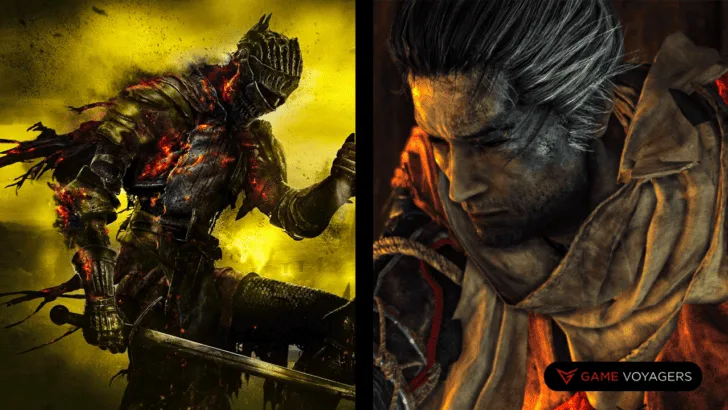For the past eight years I have come to love each and every title that has come out of From Software during that time. (I even have a special place in my heart for the admittedly somewhat lackluster Dark Souls 2.) I did had to go back and play Demon’s Souls later but that was because I have always been a bit of an Xbox fanboy and I didn’t own any of Playstation’s systems at the time.
Even though you will be hard pressed to find someone who doesn’t at least know that “Dark Souls is really hard”, many players have yet to dive into Miyazaki’s two most recent titles: Dark Souls 3 and Sekiro: Shadows Die Twice. Although the games are similar in many ways, it is not an exaggeration to say that they are also vastly different as well.
Throughout this article I will be attempting to compare these two games to see if maybe I can shed some light on which one would be better for you to try. But to be honest with you right up front, if you liked one of these then there will be no harm in picking up the other. A hunter is a hunter after all…oh sorry, that’s the wrong game.
I will be drawing out some comparisons and differences in the following categories: Genre, Gameplay, Mechanics, Story, Replay Value, Music, and finally, Difficulty. Bare in mind that some of the critiques or praises I might give out for various things are just one man’s opinion and you might not feel the same way.
I will also do my best not to spoil anything major with regards to story but some light spoilers might be required to talk about certain mechanics or gameplay elements you can discover on your own. In truth, this is actually the way both of these titles are meant to be played. With that out of the way, let us begin.
Related: Dark Souls 3 Bosses Ranked by Difficulty
Genre Comparison
The Genre of Dark Souls 3
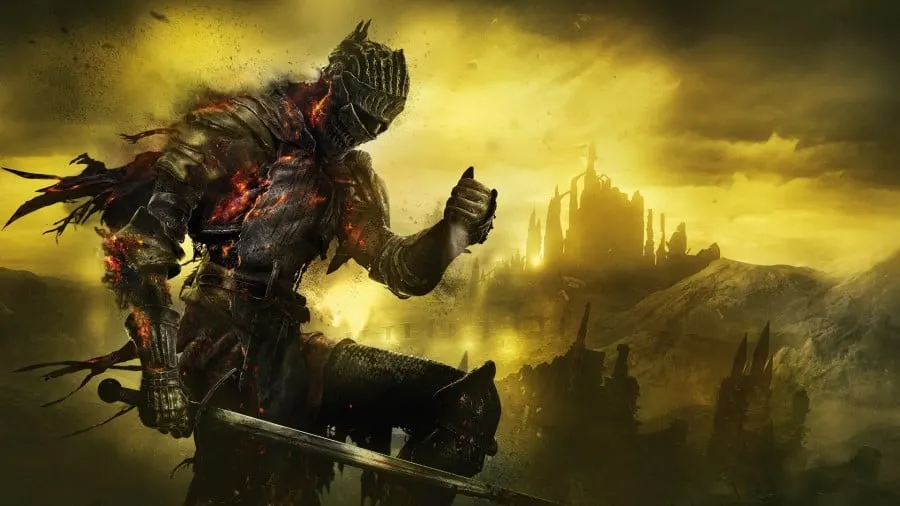
Dark Souls 3 is an RPG, or role-playing game, designed specifically to force the player to learn the stat system in order to build a character with specific abilities, strengths, and weaknesses. Some of my favorite games of all time hail from this genre, such as Bethesda’s Fallout and Elder Scrolls series.
Usually a role playing game begins the exact same way for each player and then that player is allowed to progress through the game at their own pace and with their own play style. Many of the modern RPG’s that one can play today have adapting stories that can be experienced in different ways based upon the players choices. The Dark Souls series as a whole has a small amount of that but we will get to that in a bit.
The Genre of Sekiro: Shadows Die Twice
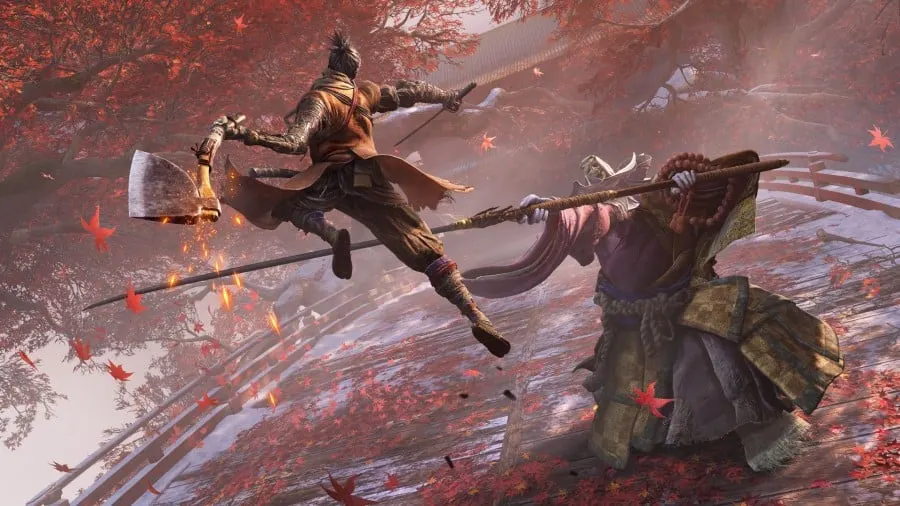
Sekiro: Shadows Die Twice is actually a bit harder to press into one mold. It is probably best described as an Action/ Adventure game but it also does contain a few of the aforementioned RPG elements. There are definitely not enough of them to be called a full-fledged RPG, but enough that they are worth mentioning when it comes to gameplay.
An Action/ Adventure game is one that focuses just a few core mechanics of the game and the experience remains virtually the same for all players. There are still ways present for a player to customize the way they handle different situations. but now they are laid out in a Skill Tree as opposed to a stat system, resulting in much less player freedom.
Anyone who plays through the entire game will unlock almost every option available to the player by the end. The only real option left up to the player is what order they want to receive them in.
Gameplay Comparison
The Gameplay of Dark Souls 3
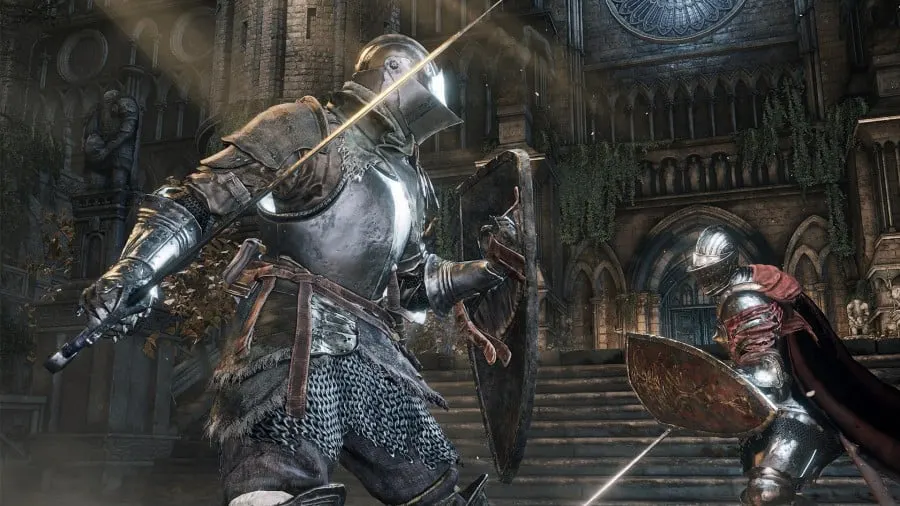
Dark Souls 3 is a game that relied heavily on the successes found in the first two games of the series and as such it should be no surprise that the core gameplay is left relatively untouched. It is to the game’s benefit, in my opinion, that the developers did not try to shake up the established formula with this sequel. This just simply wasn’t the right time or place to try that.
A player can choose to tackle this game in many ways, from a tank build (absorbing all hits with heavy armor and smashing foes with a massive weapon), to a dexterity build (rolling and dodging with great precision while delivering quick slashes and thrusts with smaller weapons), and everything in between.
There is a great variety in weaponry, shields, and armors in this game and there is a lot of discovering to do on the part of the player to see what works best and how to upgrade them. If that sounds more like a chore to you than actual fun, this game might not be for you, and that is totally fine.
Combat in this game can be clunky and stiff at times, which ordinarily would be a mark against a game. This experience however, is not an action game, it is a strategy game where learning and preparation are the keys to victory, not necessarily great skill. (Although you should try to develop a little of that as well.)
Overall, the gameplay of Dark Souls 3 is addictive and fun, if not a little slower feeling than what many gamers might be used to in other modern titles.
The Gameplay of Sekiro: Shadows Die Twice
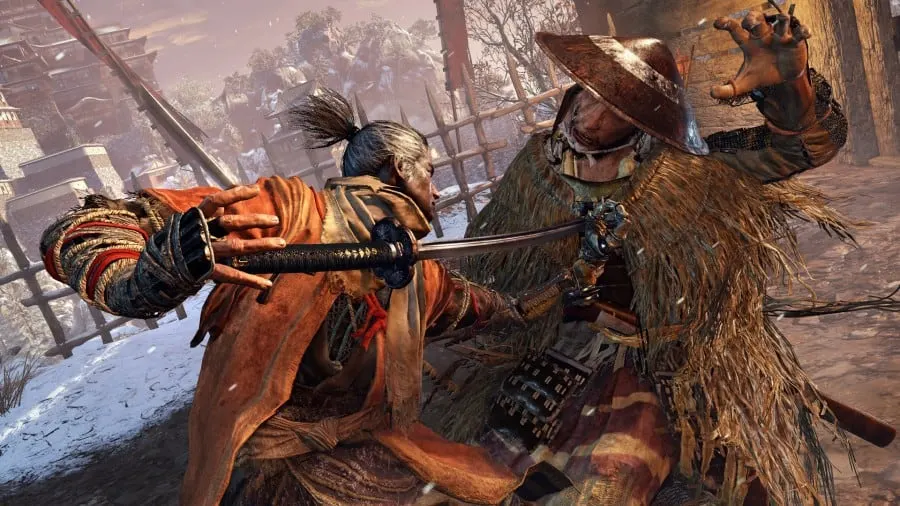
Sekiro on the other hand is a game that is very focused on faster-paced action and the skill required to progress further into the game. From Software kept the skeleton and inner workings of what made their other titles so successful, but for seemingly the first time they changed the formula so much that this game can be called an entirely brand new experience.
There are a few choices to be made in gameplay, but they all basically boil down to picking open combat or going in with a more sneaky approach. The game follows many of the current stealth game trends, such as awareness indicators above enemies heads and the ability to perform special attacks on unsuspecting foes.
These moments are some of my favorite from the experience and even the earlier levels with their clearly set up stealth routes feel polished and fun to play through again. There is a certain amount of skill to learn if you wish to keep up this play style towards the end, but it is well worth the time it takes to embody the shadow found in the title.
Open combat on the other hand is simultaneously difficult and rewarding. Think of it has a life and death game of Rock, Paper, Scissors as you constantly counter the enemies attacks and channel them into attacks of your own. Certain attacks from harder enemies and bosses are not able to be blocked and can only be avoided in specific ways, resulting in a growing uneasiness about when they may come.
Weaponry in this game is extremely limited as you will be using one specific weapon, Sekiro’s trusty katana named Kusabimaru, about ninety percent of the time. Other weapon options are called Prosthetic Tools and include shurikens, a flamethrower, and firecrackers to stun the enemy. Knowing when and how to use Prosthetic Tools is a key part of the Sekiro experience.
If you enjoy a faster-paced action game that poses a steep challenge and learning curve, then Sekiro: Shadows Die Twice is right up your alley. The stealth sections feel good if not a little forced sometimes and the combat system is the most complex yet refined experience that From Software has ever created.
Mechanics Comparison
The Mechanics of Dark Souls 3
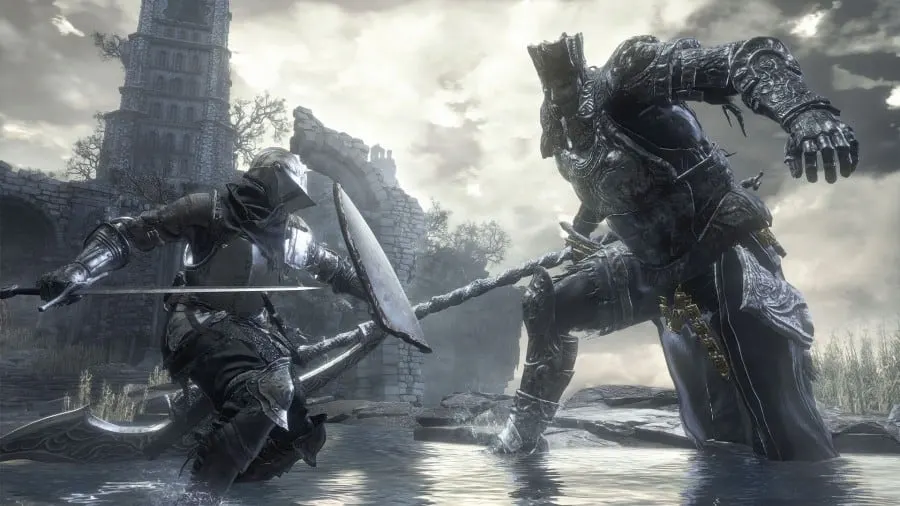
Once again the gameplay mechanics of Dark Souls 3 remain virtually the same of the rest of the series with a few small changes.
As always the overall goal of Dark Souls 3 is to make your way through the various areas, learning enemy patterns and placements, finding valuable items and weapons, and cautiously determining whether to press on in search of a new bonfire or retreat to one you have already found to level up. You will receive souls for each enemy that you happen to kill and how you choose to spend them is ultimately up to you.
Should you happen to die at any time, which is incredibly likely to happen, you will lose all your hard earned souls and leave a marker on the ground that will allow you to retrieve those lost souls on your next attempt. If you should happen to die again before reaching the marker, those souls will be gone forever so tread very carefully on your way back.
Weapon Arts were introduced to the formula to allow for some interesting special attacks from specific weaponry, which greatly added to the combat system. Other than that, combat is virtually the same as before: rolling and dodging to evade enemy attacks, knowing when and how to use your own weapons, and being prudent with your healing items and general inventory.
Exploration is also a key theme of Dark Souls 3 and particularly slow and observant players will be rewarded with a slightly easier experience then those who rush through it. Often times the tools needed to defeat a certain boss or traverse a difficult area are found nearby so keep that in mind.
The Mechanics of Sekiro: Shadows Die Twice
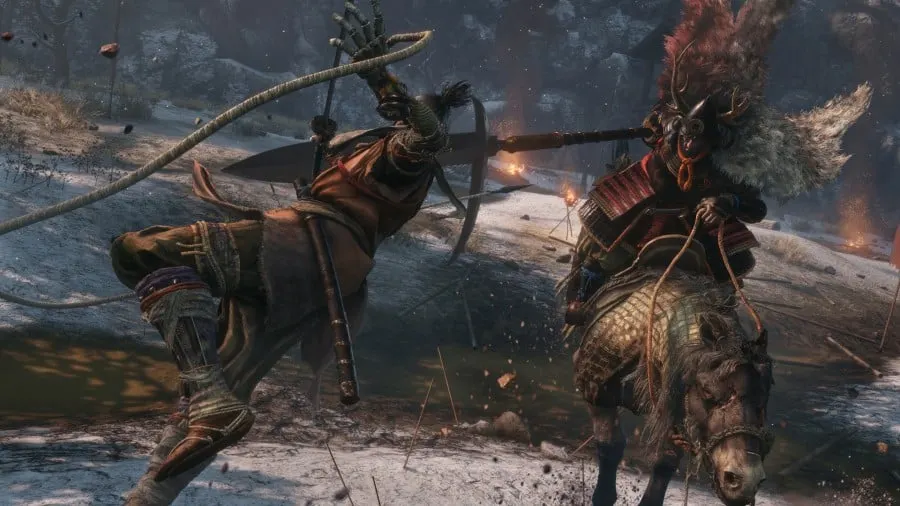
Sekiro is a much different experience than Dark Souls 3 in the area of Mechanics. Although the same difficult combat and focus on exploration is still here, the way you go about it is vastly different.
For one thing, Sekiro is a much more vertically oriented game than Dark Souls 3. You don’t even have the ability to jump straight up in Dark Souls, but in Sekiro it is an absolute necessity. Better paths that lead past enemies, incredible loot and items, and opportunities for plunging Deathblows can all found above you for much of the game.
The new grappling mechanic is my favorite thing From Software added to the formula as it makes all this vertical traversal possible as well as adding several awesome combat abilities.
Speaking of combat, as I have already mentioned, Sekiro is fast paced and requires a lot of focus most of the time. There are moments however where planning ahead of time can come in very handy, such as choosing which targets to take out with stealth before beginning an encounter with many foes. A knowledge of all the tools and items at your disposal is as essential in this title as it has always been.
The way death works in this game is also quite different than the Dark Souls series. Instead of leaving a marker, the player will have a few seconds to make a decision after death. They can either revive themselves (hence the die twice part of the title) or they can choose to succumb to their wounds.
If the player chooses to die there will be a significant chance that they will lose half of their Sen (the currency of the game) and half of the progress towards their next Skill Point. However, there is also a small chance that they will keep all of their Sen and Skill point progress.
The percentage of this chance is dependent upon how much Dragonrot (a disease connected to the story) is currently affecting the NPCs of Sekiro and the level of Dragonrot is dependent on how often the player chooses to revive themselves.
This is all a really convoluted way of saying that you need to use your revives sparingly and in the right situations. If you have barely damaged a boss and you aren’t sure how to beat him yet, you probably shouldn’t use a revive, but if you die on your way back to an idol with lots of Sen and an almost full Skill Point, you may want to consider it.
All things considered, Sekiro will feel familiar in atmosphere and exploration to a Soulsborne veteran, but the mechanics may surprise you in how fluid and fast they can be.
Story Comparison
The Story of Dark Souls 3

Okay, where to begin with the story of this game? All three Dark Souls titles are truly more of a mystery after the credits roll than they ever were before you started. To fully understand the lore of Lothric requires paying attention to your surroundings, reading every item description that you come across, and even as far as noticing specific dialogue repeated by other bosses or NPCs in the world.
To say that the story of Dark Souls 3 is difficult to understand is truly an understatement as it may require several playthroughs for the average player to have a firm handle on it. It is worth the extra time it takes though because it is actually more connected and well though out than it may appear at times.
Dark Souls 3 follows the path of its predecessors by not holding your hand in any way and the lore is no different. If you want to know it, it is there for you to find. If you don’t care that much about the story, then it won’t be shoved in your face at every turn. There is something here for everyone I suppose.
The Story of Sekiro: Shadows Die Twice
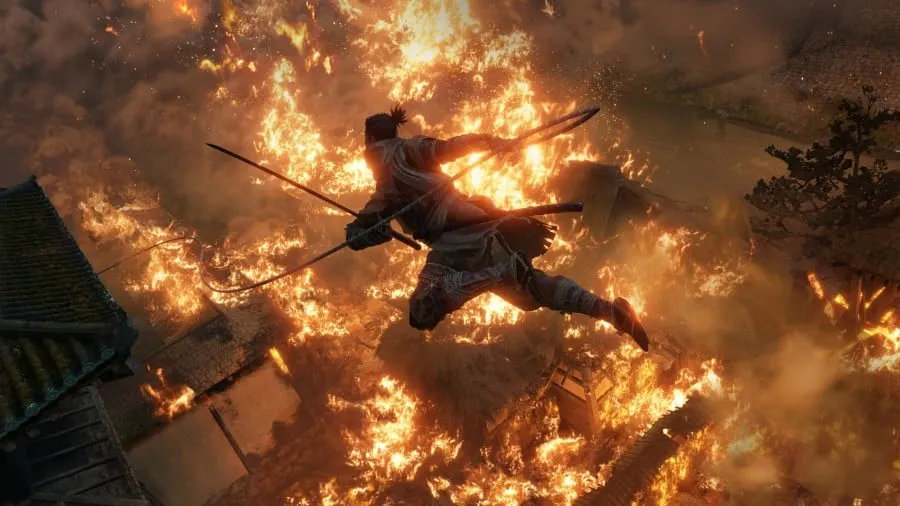
Sekiro’s story is a far easier tale to follow than Dark Souls 3 to be sure, but it is still cannot be called clear cut in any way. Cutscenes are a bit more direct and to the point, making a basic understanding of what is going on around you able to be understood by even the most casual player.
I believe this to be a good change of pace for Miyazaki because I have always enjoyed the stories and lore he has crafted, but felt that many players were left in the dark with his previous experiences. You may be able to get every tidbit of lore without some extra searching, but everything you need to know is there for you if you are paying even a little bit of attention.
I appreciate a well crafted narrative that comes in any form and although I do not think the story of Sekiro and his choices was really ground-breaking in any way, I can appreciate the cohesiveness and genuine tension the overall story can have at times.
Replay Value Comparison
The Replay Value of Dark Souls 3
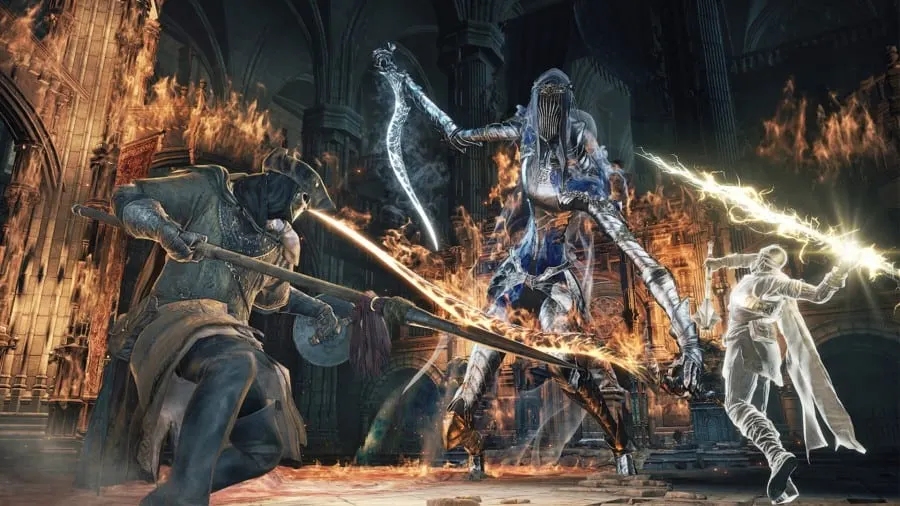
Let’s be honest right up front about both of these titles, they are highly re-playable. If you are the type of player that enjoys the experience of dying over and over again, desperate for the moment when you will finally overcome and progress, only to find a new challenge harder than the last, then chances are you won’t mind doing it all over again. This is especially true when the games in question are as polished and well made as these two are.
Dark Souls 3 has high replay value due to the ability for the player to change up what build he or she was using during their first playthrough. This is what makes RPGs such a joy to experience because of how much different your second experience with the game can be.
The Replay Value of Sekiro: Shadows Die Twice

Sekiro has high replay value due to the ability for the player to bring all of the Arts and Prosthetic Tools they have acquired in their first playthrough over to their second. Enemies and bosses remain the same (with small buffs to their health and damage), but taking on the early game foes with your late game weaponry feels really good and is worth the extra playthrough alone.
The second playthrough of From Software games is always my favorite because it makes you feel immortal compared to your first run.
Another point to consider are the many endings you can get in both of these titles based on your choices and accomplishments. I, for one, must take in every experience that I can find in games this well made.
Music Comparison
The Music of Dark Souls 3
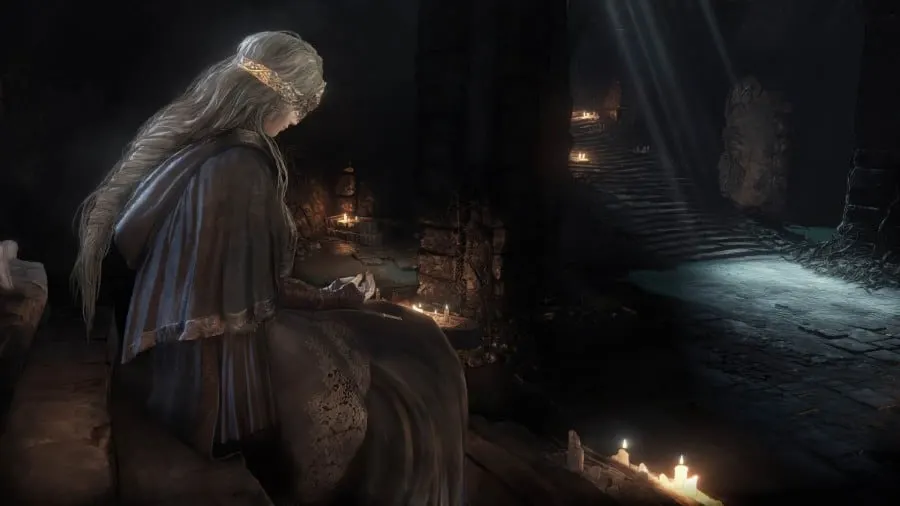
Dark Souls 3 has a musical score that is focused around sadness and remorse, heavily emphasized by low stringed orchestra numbers accompanied by high pitched soprano singing.
It is the contrast of this music with the sudden switch to war-like boss themes that can catch the player off guard and get their heart racing, similar to a jump scare music cue in your favorite scary movie.
Calm and sweat free hands are needed for victory, so try turning the volume off for some of the harder fights. It’s amazing how much calmer you can remain when it is quiet.
The Music of Sekiro: Shadows Die Twice
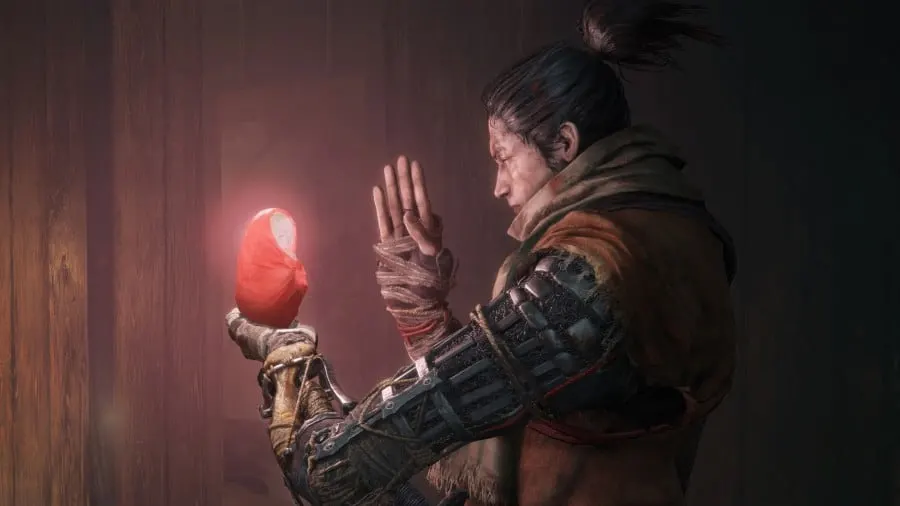
Although Sekiro has many similar tracks that invoke a sense of eeriness, the main theme mostly sticks to a more traditional oriental sound with panpipes and canvas drums. It gives a sense of honor and tradition on the part of the shinobi you are supposed to be and makes the player feel as though they need to live up to that title.
Other than that, I have to say that I enjoyed the music of Sekiro well enough but I do not think that it will remain as memorable to me as the music of the Dark Souls series. It was really more of a safe play on their part than well thought out music, which is pretty uncharacteristic of the studio as a whole.
Difficulty Comparison
The Difficulty of Dark Souls 3
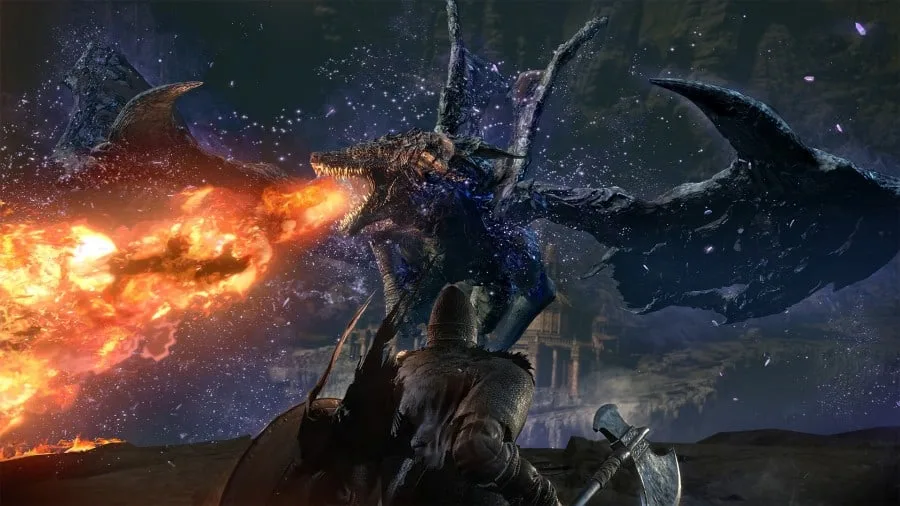
This is something that I believe will be different according to every player of the Soulsborne series. It seems to me that most gamers will point to their first From Software game as the hardest, regardless of which one it was.
For me, Dark Souls 3 was not my first game to play in the series, but rather my fifth following Dark Souls, Dark Souls 2, Demon’s Souls, and Bloodborne. That made a huge difference because I knew what to expect in terms of gameplay and difficulty.
I played the game on release night for four and a half hours before I finally died for the first time to the Abyss Watchers. Compare this to my first attempt at Dark Souls back in 2011 when I probably hadn’t even found the Taurus Demon (the first real boss) at four and a half hours!
Most of Dark Souls 3 was not difficult for me at all. You may have a vastly different experience than me based on the order you played them in, which I find to be very interesting.
The Difficulty of Sekiro: Shadows Die Twice

This game is a completely different story for me. I found this game to be one of the hardest I have ever played because of all the muscle memory I had to lose from Dark Souls. It is also a game which requires very quick reaction times and there is hardly any room for mistake, even against the smaller and simpler foes.
To be quite honest, if this is your first From Software game to try you may even have an easier time learning it then veterans of the Soulsborne series due to everything you have to forget about what you think you know. Dark Souls experience does you very little good here, so get ready to relearn the formula all over again.
Due to my own personal experience I have to say that Sekiro: Shadows Die Twice was certainly the harder of the two.
Conclusion
Dark Souls 3 and Sekiro: Shadows Die Twice are both extremely well thought out and developed games that are worthy of your money and time. I have thoroughly enjoyed many playthroughs in both of these worlds and I highly doubt that I will stop being an avid fan of them anytime soon.
A few things to note about playing through these games:
- Don’t feel like you are cheating if you have to look up a guide on progressing through an area or defeating a certain boss. We all did it sometime and there is certainly no shame in it. After all, even if you have all the knowledge you need, it does not guarantee you a victory at all.
- If you get stuck at a certain point do yourself a favor and take a break. Sometimes coming back well-rested and with a fresh perspective will help make the difficulty seem manageable. It might save you a few broken controllers as well.
- Don’t give up! Once you get into the rhythm of the gameplay these games become much easier and much more enjoyable but you have to stick with it to get there.
Now all that’s left for you to do is pick one of these amazing games and get to dyin’.

